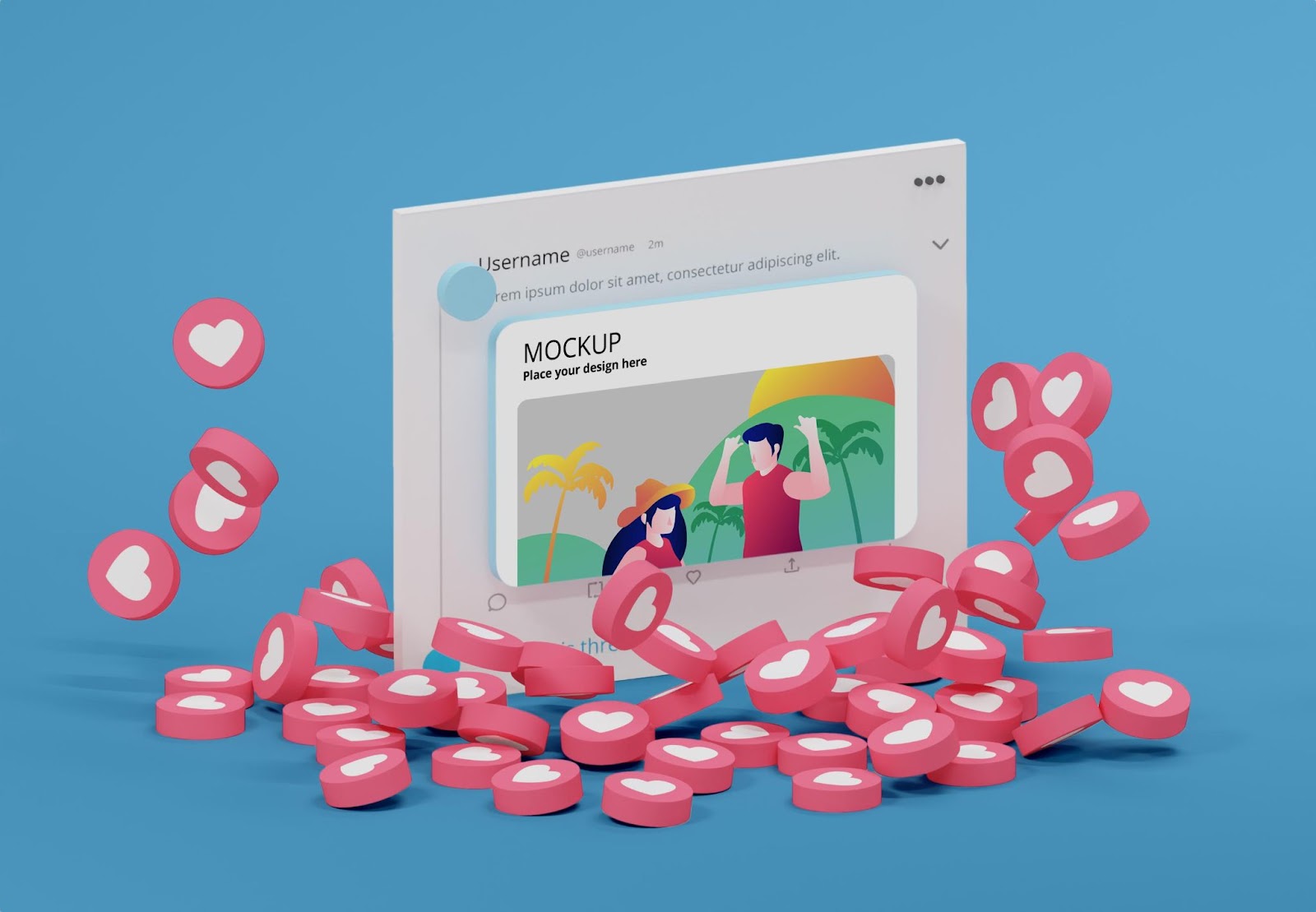In a world where everybody and every brand makes posts and is active on social media channels, the question arises, is it even relevant for brands to be actively publishing on social media channels? This is exactly what we will explore in this article.
The short answer – Social publishing is important because it provides a strategic approach to creating and sharing content across various social platforms to engage audiences, build brand awareness, and drive business goals. Whether it’s breaking news, insightful articles, or quirky tweets, social publishing enables instant interaction with your content. It’s like having a real-time conversation with your audience, which can provide immediate feedback through likes, comments, and shares.
Over 5.07 billion people are scrolling, liking, and engaging on social media as we speak. That’s more than half the planet hooked onto these platforms! In such a scenario, sticking to old-school print or traditional media alone just doesn’t cut it anymore. Social publishing lets you tap into this massive audience with ease and agility.
People ask “Is social publishing important?” Simply because it offers speed, scope, and interaction unrivaled by other mediums. It breaks down barriers between you and your audience, making your message accessible anywhere, at any time.
Intrigued? Let’s dive deeper into why embracing social publishing could be one of the smartest moves for anyone looking to make an impact online.
Importance of Social Media Publishing

In the time traditional publishers are warming up their presses, a tweet or Facebook post can travel the globe sparking discussions and sharing insights. This speed gives you the upper edge in delivering timely content that can leverage trending topics or breaking news.
Next up are reach and cost-effectiveness. Imagine reaching millions without spending a dime on distribution; that’s an everyday business in the world of social publishing. A viral post can catapult your brand into the spotlight overnight. Even without going viral, regular quality posts can build a solid following and greatly enhance brand visibility.
Social publishing ensures customization for diverse audiences. The visual vibes of Instagram differ vastly from the professional arenas of LinkedIn or the snappy exchanges on Twitter. Social publishing allows you to tailor your content not just to different audiences but also to the unique flavor of each platform.
Now, let’s talk about feedback! Unlike traditional channels where audience reactions might take time to analyze, social media gives you real-time data on how your content is performing. This means you can quickly figure out what works and tweak your strategy accordingly.
With social media tools at your disposal, you can schedule posts across different time zones and maintain an active presence even when you’re off the clock. So, let’s dive into why social publishing isn’t just another trend but a crucial part of your business strategy.
Tasks involved in Social Publishing
Think about social publishing as if you’re at a bustling street market. Every stall (or brand) is vying for attention, each with its unique style and goodies. Here’s what you’re essentially setting up to do:
- Attract Attention: You want people to stop and look at your stall.
- Engage Conversation: Once they stop, you’ll need to engage them with interesting stories or useful information about your products.
- Convert Interest into Action: Finally, you’re aiming to turn that fleeting interest into a purchase, a follow, or at least a memorable impression.
From crafting eye-catching posts that resonate with different demographics to timing your posts when your audience is most receptive, the tasks of social publishing involves strategic planning, creative content creation, and agile response management. All these steps ensure that your brand not only participates but stands out in the bustling marketplace of ideas and interactions that is social media.
Social Publishing Essentials To Ace Your Brand Marketing
The importance of social publishing lies in the tools to reach vast audiences quickly, interact with them in real-time, tailor content per platform, get immediate feedback, and plan efficiently—all while being cost-effective. It’s not just an option anymore; it’s an essential part of any successful digital strategy.
Social publishing also empowers you to engage directly with your audience through comments and direct messages – turning passive readers into active participants in your brand story. Social publishing is not just about broadcasting content; it’s about fostering a dynamic interaction where your content adapts to live feedback and engages directly with its consumers.
Implementing the right platform
Social publishing is quite an involving task for social media managers. Along with the constant need to stand out with creativity and posting relevant content, the task to ensure the right posts are going at the right time makes the whole social media publishing process strenuous. With a social media publishing platform like Konnect Insights, managers can use the content bucketing, and generative AI capabilities of Konnect AI+ to boost creativity and use the advanced scheduling capabilities to ensure all posts are published across social media accounts and channels seamlessly. Explore Konnnect Insights’ Social Media Publishing capabilities
Reach and Audience Building
Imagine launching a fantastic product in the middle of the desert. No matter how great it is, if nobody knows about it, it’s like it doesn’t exist. Social media turns this around. With effective social publishing, it’s like having the busiest shopping streets in the world right on your doorstep.
Building Relationships and Fostering Engagement

It’s not just about broadcasting but building genuine relationships. Social publishing allows you to interact directly with your audience in real-time – thank followers for their loyalty, react to their suggestions, and handle their complaints swiftly. It’s like being in an ongoing conversation where you can respond to comments, ask questions, and get feedback that could be pivotal for your brand. This two-way street builds relationships that foster trust and loyalty.
Content Distribution and Promotion
Remember when flyers and billboards were the go-to for promotions? Well, social media is the new billboard but better. You can share your content across multiple platforms reaching different demographics with tailored messages all at once or staggered according to peak engagement times. With social publishing, you can distribute your content across multiple platforms. This isn’t just about broadening reach; it’s about adapting your message to fit the context of each platform effectively.
Social Reach
This term might sound fancy but think of it as your digital word-of-mouth. Have you ever shared a meme or an article with friends? That’s social reach in action! It’s not just about how many people you can reach but how deeply you can engage them. Posts that resonate with viewers are shared, liked, and commented on—each interaction amplifies your reach organically. Think of viral content; it’s powerful because it multiplies audience engagement exponentially.
Building Brand Loyalty and Reputation
Consistent and authentic content helps build brand loyalty. Customers feel valued when they see brands communicating honestly and transparently over social media, which enhances reputation over time. Consistent posting of valuable content helps establish your brand as a thought leader in your space. It’s about being present and providing value consistently so that over time, people not only recognize your brand but respect and trust it too.
Content Distribution and Engagement
Each piece of content tailored to the norms of different platforms (Instagram loves visuals; Twitter thrives on quick updates) ensures higher engagement rates. Every like, share, or comment is an indicator of your content’s performance. Real-time feedback is invaluable as it helps tailor future content to better meet the interests of your audience.
Gaining Valuable Customer Insights
With every like, share, and comment, your customers provide insights into what works and what doesn’t. This direct feedback loop can help refine strategies quicker than ever before. Social publishing acts like a two-way mirror: while you post content outwards, the engagement metrics serve as insights coming inwards to you. These analytics help understand customer preferences, behaviors, and trends.
Also, read Master Your Online Presence with a Strategic Social Media Publishing
Staying Ahead of the Curve
Social publishing allows you to keep up or even stay ahead by continuously adapting to these changes effectively. The digital landscape is ever-evolving, and staying updated is crucial. Social publishing requires you to keep a pulse on current trends and adapt quickly. This agility is key to maintaining relevance and competitive edge.
What are the Disadvantages of Social Publishing?
While social publishing can feel like a marketer’s dream, it comes with its own set of challenges. Picture this scenario: you’ve crafted a perfect post, hit the share button, and suddenly you’re met with a backlash you didn’t anticipate. Yes, social media is a double-edged sword, and understanding its disadvantages helps you wield it more wisely.
- The Risk of Negative Feedback
Platforms like Twitter and Facebook are not just channels for promoting products; they’re open forums where dissatisfaction can be voiced loudly and publicly. Negative feedback can spread like wildfire, impacting your brand’s reputation faster than you’d think. Keeping up with this feedback requires a thick skin and a solid crisis management strategy. - Constant Monitoring
Social publishing isn’t a ‘set it and forgets it’s kind of task. It demands constant attention. You need to keep the content fresh and engaging, respond to comments, monitor feedback, and adjust your strategy based on analytics. If your team is small or you’re multitasking within your business, this can quickly become overwhelming. - Public Embarrassment
A minor typo or an ill-considered hashtag can lead to embarrassment in front of a global audience. Remember the brand that tried to engage with a serious social issue using a lighthearted tweet? It backfired spectacularly, leading to public outrage and necessitating an apology from the brand.
Conclusion
Social publishing is integral in today’s digital marketing strategy. It offers unparalleled reach, engagement opportunities, real-time feedback, and valuable customer insights that can significantly influence business strategies. Success in social publishing doesn’t come from blasting messages into cyberspace but from crafting thoughtful content tailored to engage and resonate with your target audience on their preferred platforms. The key lies in using this power wisely – from crafting compelling content that speaks directly to your audience’s needs and preferences to engaging them in meaningful conversations that build lasting relationships.






























